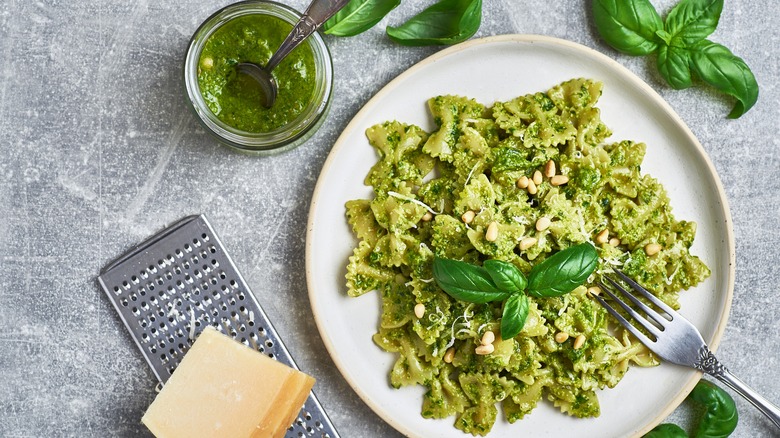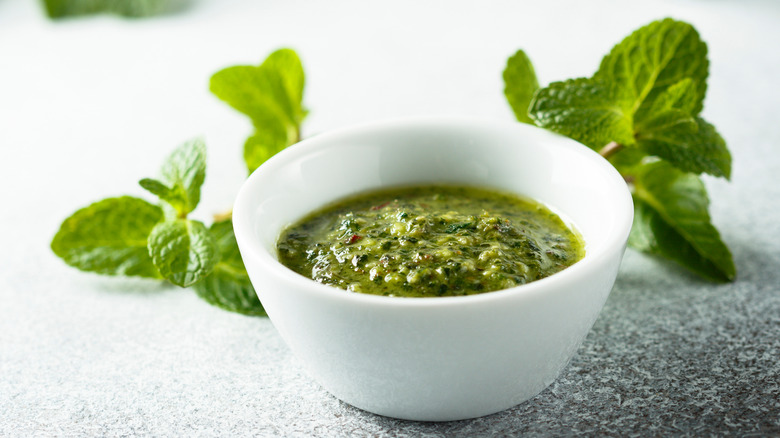Mint Is The Fresh Herb Your Store-Bought Pesto Is Missing
With pasta sauce it never helps to be shackled by tradition, especially when you're trying to add flavor to bland store-bought pesto. Our endless debates over authenticity often get so narrow that we ignore the many versions of traditional recipes that exist in their respective home countries. Some people act like only pesto made from basil, pine nuts, olive oil, and Parmigiano-Reggiano is the real deal, and they're dead wrong. Not only are there plenty of non-traditional variations that are delicious, there are plenty of regional variations of pesto throughout Italy that incorporate different nuts, tomatoes, citrus zest, and even pig lard. An easy way to think outside of the norms with pesto is to start with a fresh bunch of mint.
Mint is a great addition to store-bought pesto or in a fresh homemade version, like in our almond mint pesto. The jarred stuff often lacks the fresh punch of the homemade versions as its flavors dull in storage. Mint is a very strong herb on its own (in our recipe it needs to be paired with a more bitter partner like spinach), but its bright, cool flavor is similar to basil in many ways. A teaspoon or two chopped and mixed into your store-bought pesto helps liven it back up without changing its basic taste too much. Think of what a squeeze of lemon can do to a slow-cooked sauce, when all those subdued notes wake back up ... that's what mint can do for jarred pesto.
Mint can help pesto work as a sauce or condiment
One of the best things about mint, especially if you opt to make your own pesto, is that its powerful menthol flavor actually gives you a lot of options for customizing your sauce. Other versions of the green condiment, which might use arugula or parsley instead of basil, can be hearty and delicious, but lack basil's brightness. Mint lets you add that element back to any variation of pesto you like, or amp it up even more by adding to basil versions. You may love the hearty, earthy flavors of a kale pesto, but miss the balance of lighter flavors, and mint boosts it back up to whatever level you prefer. That versatility also means you can make different versions of pesto that work for dishes like roasted meats or vegetable dressings.
Pesto may be most associated with pasta, and a mint pesto will make a great summer pasta, but picture it spooned over sliced pork or lamb, and you'll realize its potential. Making a caprese salad? Ditch the sliced basil and mix your mozzarella and tomato with mint-laced store-bought pesto for some really next-level freshness and flavor. Spread it on grilled bread for a light appetizer, or add a little extra olive oil and make some herby white beans. Embrace the possibilities of the pesto formula with mint and other fresh herbs and you may never run out of ideas.

